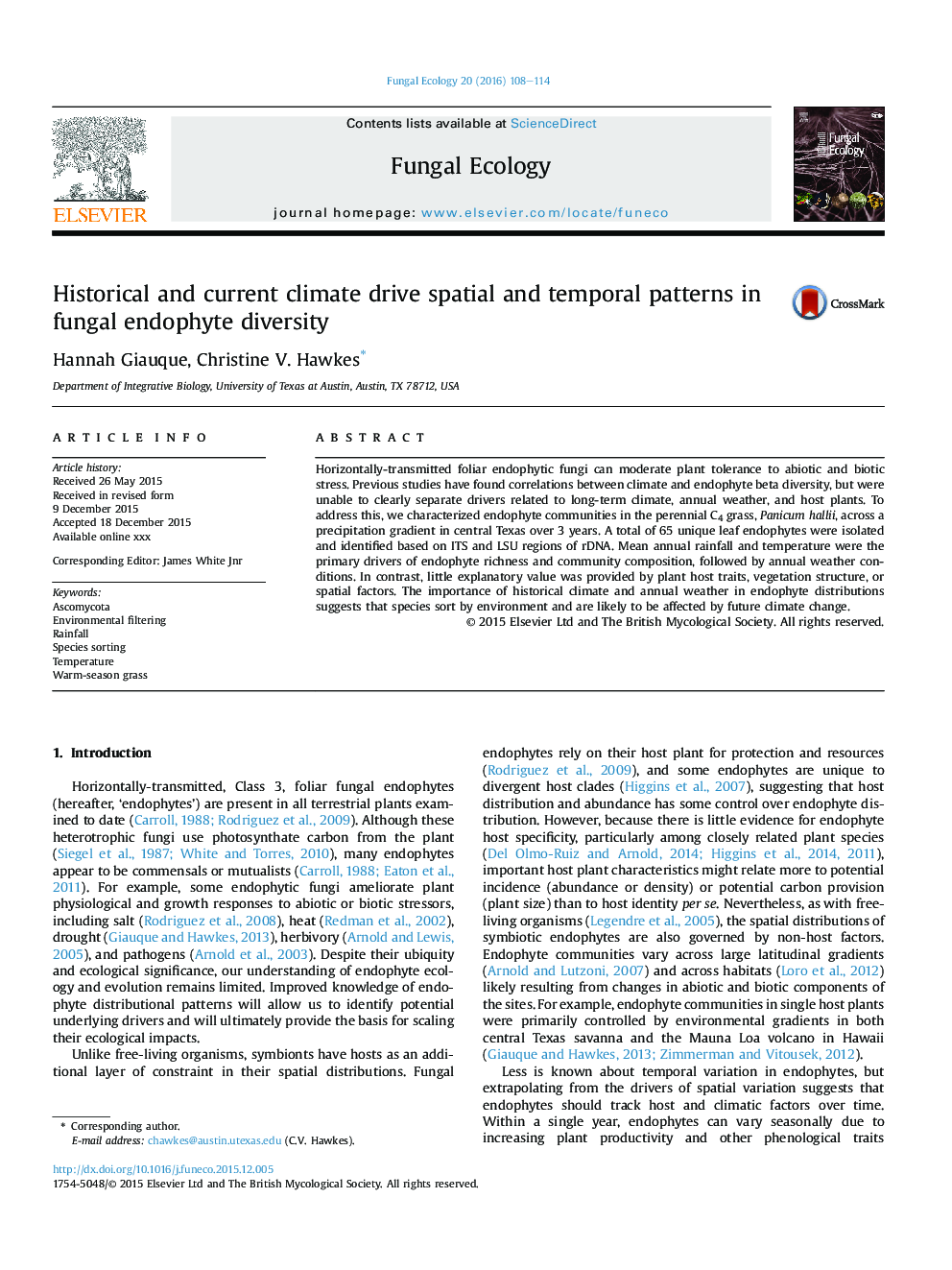| Article ID | Journal | Published Year | Pages | File Type |
|---|---|---|---|---|
| 8384467 | Fungal Ecology | 2016 | 7 Pages |
Abstract
Horizontally-transmitted foliar endophytic fungi can moderate plant tolerance to abiotic and biotic stress. Previous studies have found correlations between climate and endophyte beta diversity, but were unable to clearly separate drivers related to long-term climate, annual weather, and host plants. To address this, we characterized endophyte communities in the perennial C4 grass, Panicum hallii, across a precipitation gradient in central Texas over 3 years. A total of 65 unique leaf endophytes were isolated and identified based on ITS and LSU regions of rDNA. Mean annual rainfall and temperature were the primary drivers of endophyte richness and community composition, followed by annual weather conditions. In contrast, little explanatory value was provided by plant host traits, vegetation structure, or spatial factors. The importance of historical climate and annual weather in endophyte distributions suggests that species sort by environment and are likely to be affected by future climate change.
Related Topics
Life Sciences
Agricultural and Biological Sciences
Ecology, Evolution, Behavior and Systematics
Authors
Hannah Giauque, Christine V. Hawkes,
